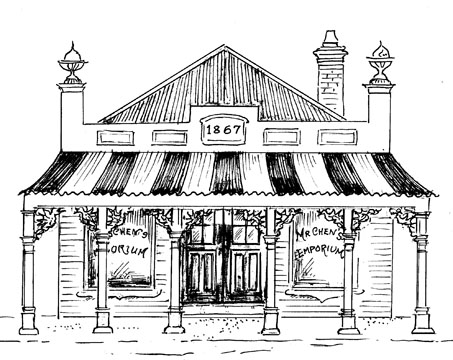
People sometimes ask me if there really was a Gold-Rush-era emporium owned by a Mr Chen. I’m sorry to say that both the building and its owner are simply products of my imagination. As for Millbrooke itself, although it has echoes of many localities including my own town, I see it as a mythical place rather than a real one.
I was amused when an acquaintance from the Southern Highlands told me she was certain that Millbrooke was really Berrima. Someone else thought it might be Beechworth; my publicist said it reminded her of her hometown in south-eastern Queensland, while another friend suspected it was Coolamon, largely because they have a wonderful old emporium there, which has been preserved as a heritage centre. Anyway, I’m really delighted that the town I created possesses a universality which can be applied to many places.
Because the Gold Rush towns of south-eastern Australia all boomed at around the same time, most of them have a common architecture, characterised by cast-iron lace, striped metal awnings and fancy parapets topped by Grecian urns. There will almost certainly be several pubs with big verandahs, their libertine pasts balanced by a similar number of gracious stone churches. You might even find a school of arts building, old-style stores and rows of charming cottages.
Many of these towns also share a similar climate, very different to temperate, coastal locations like Sydney. There are four distinct seasons, producing blossoms in spring, warm (but not humid) summers and golden-leafed autumns. Depending on how you feel about cold winters, that particular season could be described as either ‘brisk’ or ‘harsh’. Don’t get me started on frost. I’ll save that for another time.
The other thing that these gold towns have in common – and this applies to rural Australia in general – is a sense of community. I recall seeing a little photo of a teddy bear on the front page of our local newspaper with a caption asking for the owner to come and claim it. To me, that encapsulates the ties that bind a rural community. Even the little things are important. And everybody counts.
Deborah O’Brien
September 2012
